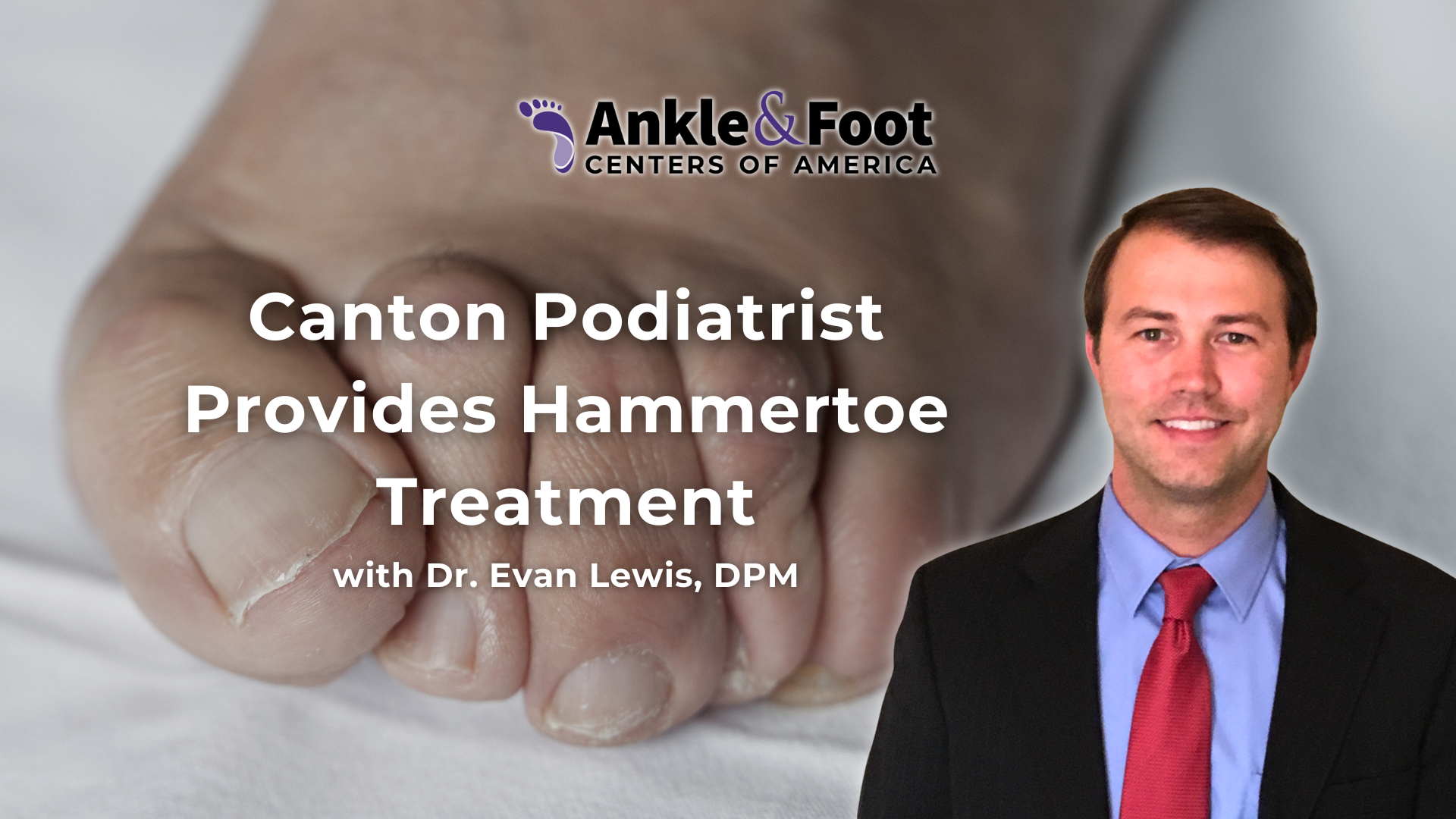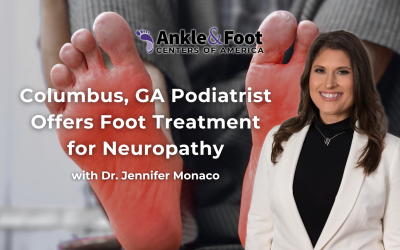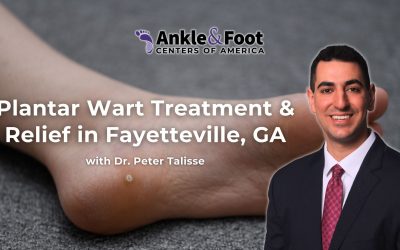When a toe begins to curl downward or bend in an unusual way, it could be more than just a minor annoyance. Hammertoe is a common condition that affects thousands of people each year. What may start as mild irritation when wearing shoes can gradually lead to persistent pain and difficulty walking.
At Ankle & Foot Centers of America, patients will receive the best hammertoe treatment in Canton, GA, focused on restoring comfort, balance, and mobility. The experienced podiatrists take time to understand each patient’s needs, offering personalized care that corrects the problem and helps them get back on their feet with confidence.
Table of Contents
What Is a Hammertoe?
A hammertoe is a toe deformity that occurs when one or more of the joints bend abnormally. This happens when the muscles, tendons, or ligaments that keep the toe straight become imbalanced. The middle joint of the toe begins to buckle, creating a hammer-like shape—hence the name “hammertoe.”
This condition most often affects the second, third, or fourth toe, though any toe can be involved. Early on, the toe may remain flexible, but as the deformity progresses, it can become stiff and painful. Corns, calluses, and pressure points often form, making it difficult to wear shoes comfortably.
Common Causes of Hammertoe
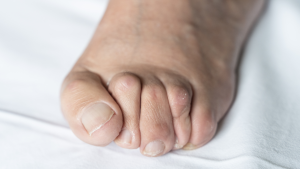 Several factors can contribute to hammertoe development:
Several factors can contribute to hammertoe development:
- Poorly Fitting Shoes – Tight, narrow, or short shoes can force toes into a bent position, shortening muscles and tightening tendons over time.
- Genetics – Inherited foot structures, such as high arches or flat feet, may increase susceptibility.
- Muscle Imbalance – Nerve problems or biomechanical issues can cause one muscle group to overpower another, leading to deformity.
- Injury or Trauma – A stubbed, broken, or jammed toe may develop hammertoe later due to ligament or tendon damage.
- Arthritis and Inflammation – Chronic joint inflammation weakens tissues, contributing to misalignment.
Recognizing the Symptoms
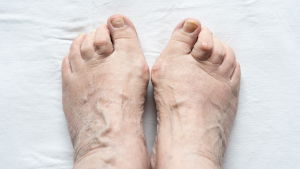 Hammertoe symptoms often start mild and worsen gradually. Early detection allows for simpler treatment and better long-term results. Common signs include:
Hammertoe symptoms often start mild and worsen gradually. Early detection allows for simpler treatment and better long-term results. Common signs include:
- A toe bending downward at the middle joint
- Pain or rubbing on the top of the toe
- Corns or calluses forming on affected areas
- Redness, irritation, or swelling
- Limited flexibility or stiffness
- Pain in the ball of the foot due to pressure changes
Left untreated, hammertoes can become rigid and significantly impact mobility.
Types of Hammertoe
- Flexible Hammertoe: The toe can still be straightened manually; conservative care is usually effective.
- Rigid Hammertoe: The joint becomes fixed due to long-term imbalance or arthritis; surgical correction is often needed.
Diagnosing Hammertoe in Canton, GA
At the Canton location of Ankle & Foot Centers of America, each visit begins with a detailed foot examination. The podiatrist assesses toe alignment, joint flexibility, and overall foot structure.
Digital X-rays may be used to visualize bone alignment and determine the severity of the deformity. Gait analysis helps identify underlying biomechanical issues that contribute to hammertoe formation.
The objective is always to treat the root cause—not just the symptoms.

Hammertoe Treatment Options
Treatment depends on whether the hammertoe is flexible or rigid, as well as on the patient’s pain level, activity, and overall health.
Non-Surgical Treatments
For early-stage hammertoe, conservative care can provide significant relief:
- Proper Footwear: Choose shoes with wide toe boxes and soft, flexible materials.
- Custom Orthotics: Inserts designed to correct foot mechanics and relieve pressure points.
- Toe Exercises: Gentle stretching and strengthening exercises improve mobility.
- Padding and Taping: Protects the toe from friction and irritation.
- Anti-Inflammatory Care: Ice, rest, and mild medications help reduce swelling and discomfort.
Many patients experience improvement through these non-invasive measures.
Surgical Treatments
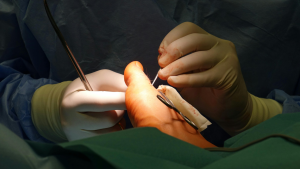 When the deformity becomes rigid or painful, surgery may be necessary.
When the deformity becomes rigid or painful, surgery may be necessary.
Modern procedures use minimally invasive techniques to correct alignment, release tight tendons, or realign joints.
For severe cases, joint resection or fusion may be performed to restore a straight, functional toe.
Most patients are able to walk in a surgical shoe shortly after the procedure and return to normal footwear within six to eight weeks.
Living with Hammertoe: Prevention and Long-Term Care
Preventing hammertoe—or stopping it from worsening—requires ongoing attention to foot health:
- Wear supportive shoes with ample toe space.
- Avoid high heels or pointed-toe footwear.
- Use orthotics to maintain balance and alignment.
- Stretch feet and toes daily.
- See a podiatrist at the first sign of discomfort or toe changes.
Simple adjustments can go a long way in maintaining long-term comfort.
What to Expect During a Visit
During the initial appointment, the podiatrist reviews symptoms, medical history, and performs a thorough examination. X-rays may be taken to confirm the diagnosis, and a personalized treatment plan is developed based on lifestyle, activity level, and goals.
Whether the patient is an athlete, a professional, or a retiree wanting to stay active, care is tailored to fit individual needs.
Recovery Timeline
- Conservative Care: Improvement often occurs within days or weeks.
- Surgical Recovery: Patients typically walk immediately in a protective shoe. Swelling peaks during the first week, then gradually subsides. Most return to regular footwear within 6–8 weeks.
Follow-up appointments ensure healing progresses properly and that full comfort and mobility are restored.
Frequently Asked Questions
Is hammertoe surgery painful?
Pain is minimal. Local anesthesia and advanced surgical techniques reduce discomfort, and most patients experience only mild soreness for a few days.
Can hammertoes go away on their own?
No. Once a hammertoe forms, it will not correct itself, but early treatment can prevent worsening.
What shoes should I wear after surgery?
Opt for supportive shoes with roomy toe boxes and cushioned soles. Avoid tight or high-heeled footwear until cleared by your podiatrist.
When can I drive or exercise again?
Driving is often possible within 1–2 weeks, and light exercise may resume within 4–6 weeks, depending on recovery progress.
Can hammertoes return after surgery?
Recurrence is rare when proper footwear and orthotics are used post-surgery.
Take the Next Step Toward Pain-Free Feet
For residents of Canton, Georgia, seeking the best hammertoe treatment, Ankle & Foot Centers of America offers comprehensive solutions from conservative care to advanced surgical correction.
Call 470-287-5383 today or visit the website to request an appointment with Dr. Evan Lewis. Experience professional care that helps every step feel comfortable again.

